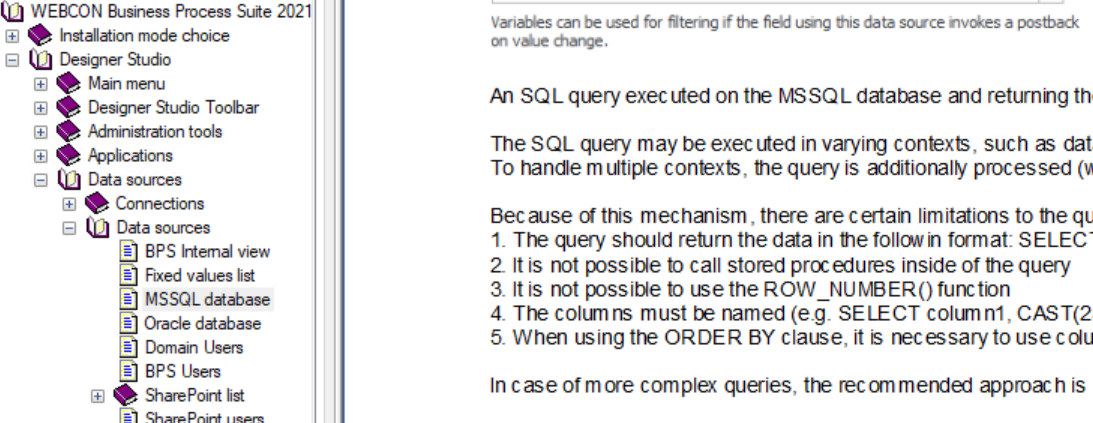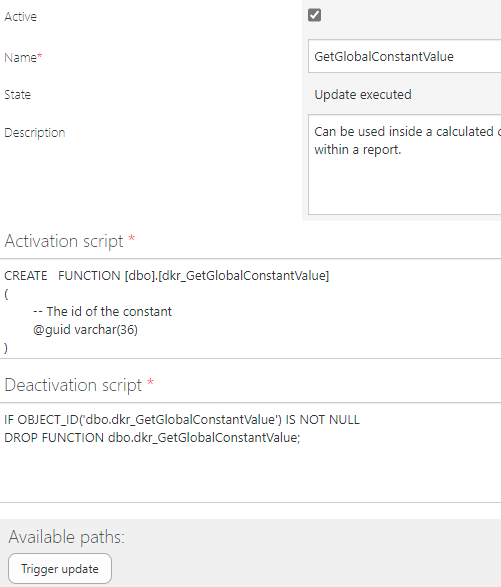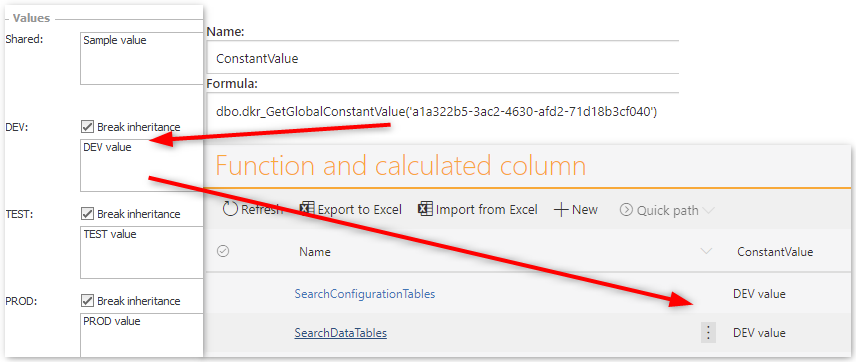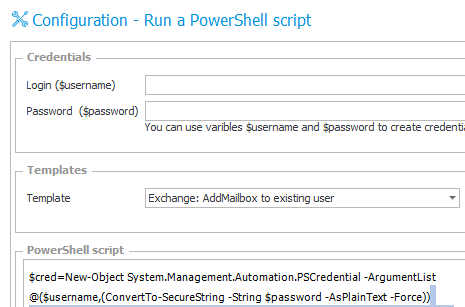Deploying database scripts
Overview
In most cases the application package contains everything you need to transport an application from one environment to another. It starts with the data model, workflow definition and form. Furthermore, it contains UI elements, custom extensions and optional documents, configuration values, user groups and security settings for the environments. If all of these are part of the package, in which cases do you need to deploy additional artifacts by yourself?
In some situation you may encounter limitations when you are writing SQL statements, even so these can be really advanced. Another one is when you need to reuse the same SQL statement in different places. Of course, you could replicate it everywhere, but this would increase the number of places which need to be maintained. This can be solved by creating custom views, stored procedures, or functions in the database. The drawback is, that these changes will not be part of the package and need to be transferred manually. If you don’t like this approach, you will find another solution, for example creating a process.

If you are wondering whether creating objects in the database is actually allowed:
Quote from the help: In case of more complex queries, the recommended approach is defining a view or a table-valued function and using them to return the data.

MSSQL database data source.
Dictionary process to the rescue
If a dictionary process is transferred from one environment to another, you can also transport the data. In combination with the Run a SQL procedure we can use this feature to automate the deployment of artifacts.
- The dictionary process stores the SQL statements.
- Upon path transition the statements are executed against the
currentdatabase.
This allows a controlled deployment of any custom database modifications, while utilizing the audit features of WEBCON BPS, workflow history and logging of action execution.
Application Artifact deployment
Using the process Database script
The application Artifact deployment contains the dictionary process Database script. This process stores the scripts which should be deploy to (activate) or remove from (deactivate) a database. I kept the activate/deactivate wording to keep in line with other dictionary processes. Once the path Trigger update is executed the following will happen:
- A one minute timeout will be triggered.
- The timeout will always trigger the execution of the deactivation script, and optionally the activation script. This depends on the
Activeflag is set. - If this fails, an error path will be executed which will send a mail to the application supervisor.
Info: A task is not assigned to the application supervisor. Dictionary entries aren’t intended to be used with tasks. No mail will be sent and the finished task will still be displayed after completing it.
Info: The application supervisor was chosen as a recipient, because the current user can be the service account which may not have a mail address.
Each action changes the State, these are:
- Only saved
- Update triggered
- Update executed
- Update failed

Using this application, you can easily deploy new or update existing artifacts. This can be done via the Export/Import from Excel option mentioned above or by exporting/importing the application itself.

Import from Excel also triggers the default path transition.
Info: The default path transition is also triggered when the dictionary entries are updated using the import option from the report.
Additional artifacts in the application
The application package contains also a few scripts:
| Location | Value | Explained in chapter |
|---|---|---|
| Global constant Group | DatabaseScripts |
Referencing each usage of a database |
| Process business rule | GetGlobalConstantGuid |
Getting constant values in reports |
| Process business rule | GetProcessConstantGuid |
Getting constant values in reports |
| Process business rule | SampleUsage |
Referencing each usage of a database |
| Report | Function and calculated column |
Getting constant values in reports |
Referencing each usage of a database artifact
We have solved the issue that we have to deploy database artifacts ourselves along with logging these changes. The next little issue is that you may will forget, where a specific artifact is used. This can be solved by following this guideline:
- Create a global constant for each script, with the GUID and name of the dictionary entry.
- Reference the constant in a script in a comment.
- The usages tab of the global constant will show you the locations.

Info: Of course, you can use this approach without this application.
The only problem is that we can’t make use of this in reports.
Getting constant values in reports
Now and then I find myself in the situation, that I would need constant value in a calculated column, for example when creating an URL pointing to another application. Since the ids change, they can’t simply be hard coded. Currently we have no option to do this without some ‘tricks’. My solution is to call a custom function within the calculated field of a report. The provided value is the GUID of the constant which value should be retrieved.

Info: The value of the ‘mapping’ constant, has been added for this example. The ‘mapping’ constants don’t need a value at all.
In quite a lot of places you can retrieve the GUID of an object by clicking on an icon next to the id.

This is not the case for constants though. Therefore I added the process business rules GetGlobalConstantGuid, GetProcessConstantGuid to cope with this.
- Testing the rule will request the id of the constant.
- The expression preview will display its GUID.

Warning: The function is executed for each row. If you are using this in a highly frequented report it may cause noticeable load on the SQL server.
Provided functions
Sample ComplexQuery
This is just a sample script used for chapter Referencing each usage of a database.
Get constant value
The functions GetGlobalConstantGuid and GetProcessConstantGuid can be used in calculated columns of reports. They retrieve he value of a constant as described in Getting constant values in reports. The retrieved value takes the global as well as the process level environment type into account.
Searching tables
These stored procedures allow to search all text fields for a specific string.
| Stored procedure | Usage |
|---|---|
| dkr_SearchAllTables | Searches through all tables in the whole database. This may take a lot of time and shouldn’t be executed on a production database. |
| dkr_SearchConfigurationTables | Searches through all ‘configuration’ tables. Tables, storing workflow instance data and the like, are ignored. This should be used when searching for a value used in a SQL statement or similar. This should be fairly fast in comparison. |
| dkr_SearchDataTables | Searches through all ‘data’ tables. Configuration tables are ignored to improve the performance a little bit, though it still shouldn’t be executed against a production database. This can be used to find all references of a user assignment for example. If you need this more often you could think about using this application |

ColumnName contains the table and column in which the search string has been found while the value of the SelectStatement can be copied to get more information.
Remarks
Contained Business entities
Unfortunately, the package contains three business entities. Make sure that you don’t overwrite yours during the import.
Insufficient database privileges
It’s assumed that the account executing the script has sufficient privileges to modify the database. If this is not the case and you need to use another user, you can replace the existing actions with a Run a PowerShell script action. This will allow you to create the credentials for another user which can be used to execute the Invoke-Sqlcmd

Run a PowerShell script action.
Scripts are applied against the current database
The scripts are executed against the current database only. So you either need have a copy (separate instance) in each database. Alternatively, you can modify the actions so that these are executed against all databases.
Use only read-only modifications
Even so it’s the recommended approach to add a function or view, when necessary, these should only be read-only and never should create/modify the WEBCON BPS database and it’s data.
Activation/Deactivation scripts
Make sure that these scripts work on the target SQL servers. I had the problem, that I used CREATE OR ALTER which is available since SQL Server 2016 SP 1. Unfortunately, this was not available on the TEST server so it failed with an unspecific error.
Download
If you would like the application template or to take a look at the scripts, you can go over to the GitHub repository.
Applications packages starting with BPS Version 2021.1.3.205 no longer contain the database scripts.
Comments